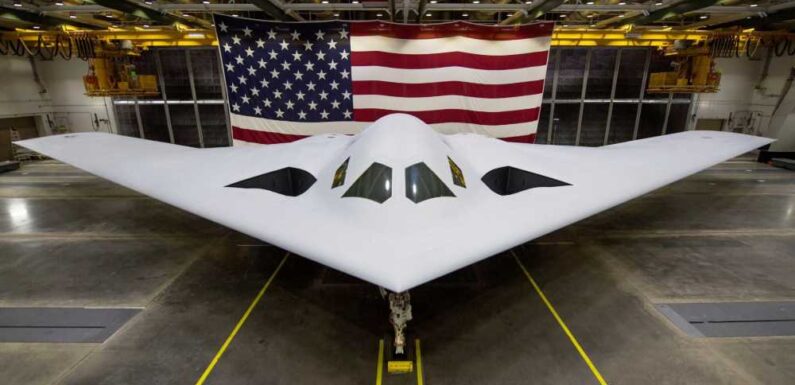
CHINESE researchers have staged a series of war games in a chilling message to the West.
As China and the US race to develop the best, most deadly, next-generation stealth aircraft a team of researchers have simulated what a future air battle would look like.
In one simulation, China's air-to-air hypersonic missiles were able to easily detect and shoot down the latest in American military technology – the B-21 stealth bomber.
The study was carried out by the Northwestern Polytechnical University in Xian, China.
Each simulation pointed towards the fact that China's advanced hardware and military tactics gave them the upper hand over any attacks from their opponents in the West.
But, Professor Chen Jun – leading the research -said that, if the US mounted a strike, the fluctuating fight for air dominance between China and the US would be far more complex and intense.
read more China-US relations

How China spies use ‘sex & cash to steal secrets’ as ‘agent’ arrested in UK

China warns it will ‘strike down US forces before they even see Taiwan’
According to the professor, if both countries were to actually engage in an air battle it would take hours for the dust to settle.
This comes just weeks after the US's brand new nuclear stealth bomber was spotted soaring through the sky.
This is the B-21 Raider. It is capable of cruising at 620 mph, which means that it is only slightly slower than the speed of sound.
It has been developed to play a central role in the US Air Force's Penetrating Counter Air strategy, which is tailored towards preparing for battles with the Chinese military.
Most read in The Sun

Grace Dent QUITS I’m A Celeb ‘on medical grounds’ as fans spot moment she broke

I’m A Celeb in ‘sexism’ row as Nella Rose slammed over ‘toxic’ views about men

Strictly fans left baffled as ‘editing blunder’ is exposed during results show
Vice-president of Northrop Grumman’s strike division Doug Young said last year: "With the capability to hold targets at risk anywhere in the world, this weapon system is critical to our national security."
The planes have been described as "multi-functional" and will be capable of much more than conventional strikes.
Secretary of Defense Austin said last year: "It can handle anything from gathering intel to battle management."
But, knowledge of the B-21's development and testing has forced China to develop countermeasures.
The Chinese hypersonic missiles feature microscopic radars that allow them to track stealth aircraft.
They also have a pulse engine that enables the adjustment of power output at any time whilst flying – allowing it to jet off to the edge of space, and come down on an enemy aircraft at frightening speed.
This approach to air battle is unusual, and makes it considerably harder to predict – thereby giving China the advantage in many instances.
The pulse engine has also meant that these hypersonic missiles can cover much further distances than traditional aircrafts.
In one of the simulated war games, the researchers found that the US stealth aircraft was able to detect the launch of a missile and evade it with a sharp turn.
The Chinese missile concluded that it was likely that it would miss the target, and passed the attack mission on to another hypersonic missile.
The US aircraft did not expect the missile to be able to switch target so rapidly, and failed to respond before impact.
It has long been known that China has the world's leading hypersonic arsenal.
They have a range of air-to-air hypersonic missiles, hypersonic anti-ship missiles, and a variety of hypersonic glide vehicles.
The Chinese Air Force has also confirmed that they are developed a large number of advanced stealth aircraft, although they are yet to reveal when they will first fly these.
US-China relations are currently at the lowest point in years, as tensions have been building over trade, human rights, Taiwan, and the South China Sea.
Recently, the US has accused China of orchestrating a campaign of dangerous air force manoeuvres against US military planes.
The Pentagon revealed that there had been 180 incidents since the autumn of 2021, and warned that it could spark conflict between them.
National security council spokesperson John Kirby said: "It won't be long before somebody gets hurt".
Biden and Jinping met in San Francisco two weeks ago in an attempt to improve relations.
Yet, the pair did not resolve any of the geopolitical issues they are divided on.
And, after Biden called his Chinese counterpart a dictator, tensions have remained at a steady high.
Source: Read Full Article



